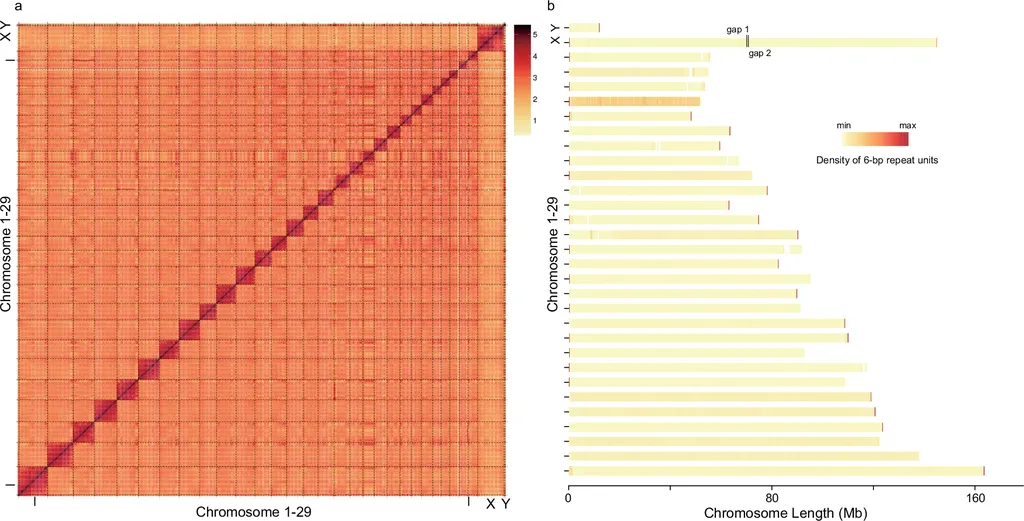In the arid landscapes of Iran’s Kerman Province, a breed of goat has long been cherished for its luxurious cashmere fiber. The Raeini Cashmere goat, known for its high-quality fiber, has been a cornerstone of the local economy, providing not just cashmere but also meat and milk. Now, a groundbreaking study has unveiled the first whole-genome resequencing dataset for this breed, opening new avenues for understanding its genetic adaptations and potential for future breeding programs.
Elham Rezvannejad, a researcher from the Department of Biotechnology at the Graduate University of Advanced Technology, led the study, which was recently published in *BMC Research Notes*, which translates to “Research Notes” in English. The research team extracted genomic DNA from blood samples of ten Raeini Cashmere goats and sequenced it using the Illumina NovaSeq 2500 platform. This dataset, now available in the NCBI Sequence Read Archive under accession PRJNA1090775, offers a wealth of information for ecological, evolutionary, and population genomic studies.
“The Raeini Cashmere goat is not just an animal; it’s a testament to the resilience and adaptability of life in harsh environments,” Rezvannejad explained. “By understanding its genome, we can unlock the secrets to its exceptional fiber quality and environmental adaptability, which could have significant implications for the textile industry and beyond.”
The implications of this research extend far beyond the immediate scope of goat breeding. The dataset provides a foundation for studying genetic adaptations that enable the Raeini Cashmere goat to thrive in arid climates. This knowledge could be instrumental in developing strategies for other livestock breeds facing similar environmental challenges, potentially enhancing their resilience and productivity.
Moreover, the study’s findings could pave the way for more targeted breeding programs aimed at improving cashmere production. By identifying specific genetic markers associated with desirable traits, breeders could select animals with the highest potential for producing high-quality fiber, thereby increasing the efficiency and profitability of cashmere production.
“This research is a significant step forward in our understanding of the genetic basis of cashmere production and environmental adaptability,” said Rezvannejad. “It provides a valuable resource for future studies and has the potential to shape the future of the cashmere industry.”
The commercial impacts of this research are substantial. The cashmere industry is a multi-billion-dollar sector, and any advancements in breeding techniques or genetic understanding could lead to significant economic benefits. By improving the quality and quantity of cashmere fiber, the industry could see increased demand and higher market values for its products.
Furthermore, the insights gained from this study could have broader applications in the agricultural sector. Understanding the genetic adaptations of the Raeini Cashmere goat could provide valuable information for other livestock breeds, helping to improve their resilience and productivity in the face of climate change and other environmental challenges.
As the world grapples with the impacts of climate change, the need for resilient and adaptable livestock breeds has never been greater. The Raeini Cashmere goat, with its unique genetic adaptations, offers a model for understanding and enhancing the resilience of other breeds. This research not only sheds light on the genetic basis of cashmere production but also provides a roadmap for future developments in the field of animal genetics and breeding.
In the coming years, the dataset generated by Rezvannejad and her team could become a cornerstone for further research into the genetic adaptations of livestock breeds. By continuing to explore the genetic basis of these adaptations, scientists could develop new strategies for improving the resilience and productivity of livestock, ultimately contributing to a more sustainable and profitable agricultural sector.
The publication of this study in *BMC Research Notes* marks a significant milestone in the field of animal genetics. As researchers continue to build upon this work, the potential for advancements in breeding techniques and genetic understanding grows. The Raeini Cashmere goat, once a local treasure, is now poised to make a global impact, shaping the future of the cashmere industry and beyond.

